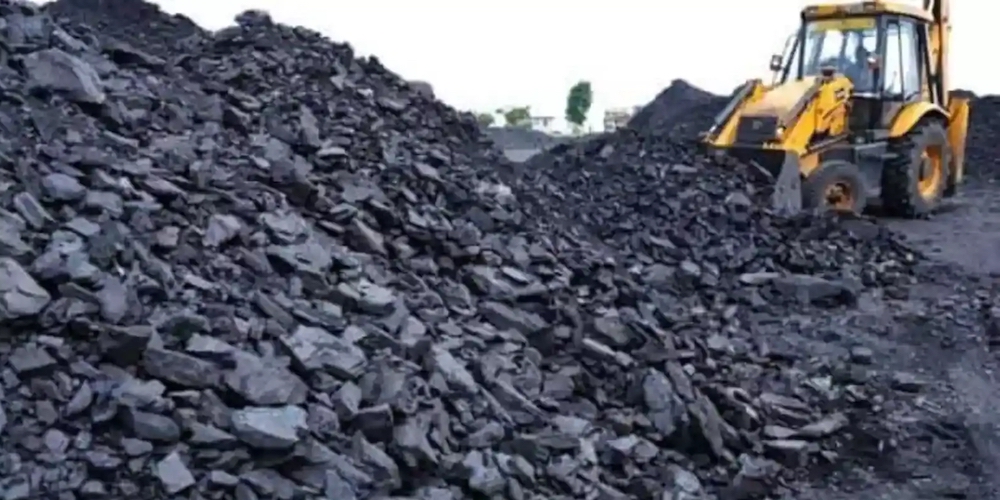Coal Driving the Country’s Energy Sector

Coal Ministry Achieves 411.62 MT Production in FY 2024-25
The Ministry of Coal has achieved a remarkable upswing in coal production during the fiscal year 2024-25 (up to September 12th), reaching a provisional figure of 411.62 million tonnes (MT).
This marks a significant increase from the 388.86 MT produced during the same period last year, reflecting a commendable growth rate of 5.85%, despite adverse climatic conditions that challenged mining operations.
Coal India Limited (CIL), a key player in this sector, has also demonstrated resilience with its production rising to 311 MT during the same period, marking a growth of 2.80% compared to 302.53 MT in the corresponding period of the previous year. This growth is even more notable given the interruptions in mining activities in CIL subsidiaries due to heavy rains.
Coal dispatch has also experienced a substantial uplift, reaching 442.24 MT during the fiscal year 2024-25 (up to September 12th), compared to 421.29 MT in the same period last year. This reflects a robust growth rate of 4.97%.
Furthermore, the dispatch of coal to power plants has shown significant growth of 4.03%, achieving 362.65 MT, underscoring the sector’s commitment to meeting the nation’s rising energy demands.
The current coal stock levels further highlight the sector’s efficiency and preparedness. As of September 12, 2024, the coal stock held by coal companies has surged to 76.49 MT, showcasing an impressive annual growth rate of 49.07%. In parallel, the coal stock at domestic coal-based thermal power plants has reached 36.58 MT, representing a remarkable growth of 43.68%.
These figures underscore the sector’s robust performance and its enhanced capacity to ensure an uninterrupted power supply and effectively meet the nation’s energy needs.

These statistics vividly illustrate the resilience and dedication of the coal sector in driving the country’s energy security forward. The Ministry of Coal asserts to remain steadfast in fostering sustained growth and operational efficiency within the sector, demonstrating its unwavering commitment to the nation’s energy needs.
Through strategic planning and adaptive measures, the Ministry says that it will continue to strengthen the coal industry’s pivotal role in India’s energy landscape, ensuring that it remains a cornerstone of the country’s development and progress.
Incidentally, according to the National Coal Inventory of 2023, published by Geological Survey of India, the total estimated coal reserve (resource) of India was 378.21 billion tonnes as of 01.04.2023.
Continuous exploration efforts in 64 coal fields (45 Gondwana &19 Tertiary Coalfields) and 15 lignite fields have resulted in substantial augmentation of the geological resources of coal and lignite.
As 1st April’2023 total updated geological coal and lignite resources of the country stood at 378.21 billion tonnes and 47.36 billion tonnes respectively.
If one goes by the State- wise coal resources in billion tonnes, Odisha tops the list with 94.52 billion, followed by Jharkhand – 87.84 ; Chhattisgarh – 80.77; West Bengal – 33.93; Madhya Pradesh 0 32.32; Telangana – 23.19; and Maharashtra – 13.34. There are other states who produce coal varying from 2 to 8 billion tonnes.
India is currently the world’s second-largest producer, importer and consumer of coal. China is the largest coal producer of the world.
However, to meet rising energy demand and reduce coal imports, India’s Ministry of Coal is planning a significant expansion in domestic coal mining, alongside its considerable renewable energy expansion.
The country, the world’s second-largest consumer of coal, imported 176 million tons of thermal coal in 2023.
India is the world’s third largest electricity producer with an installed capacity of 399 giga watts (GW) and annual generation of 1,490 billion units. Coal currently accounts for approximately 70% of the total generation and dominates India’s energy generation mix. Therefore, any aberration in the demand and supply patterns that result in a coal shortage would have a domino effect on India’s energy markets and economy.


